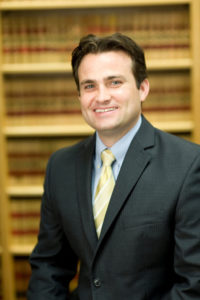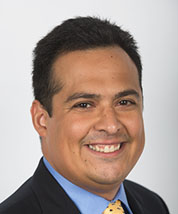Monthly Archives: September 2019
Sep 30, 2019 Kristin HickmanTax Law
Jonathan H. Choi,
The Substantive Canons of Tax Law, 72
Stan. L. Rev. ___ (forthcoming 2020), available at
SSRN.
Jurists and legal scholars who think about methods and approaches for resolving questions of statutory meaning like to talk about traditional tools of statutory interpretation and the metaphorical toolbox in which those tools are kept. Textualism versus purposivism; the relative merits of text, history, and purpose; and the meaning and utility of both semantic and substantive canons are all common fodder for discussion and debate. Adding to the literature at the intersection of statutory interpretation and tax, Jonathan Choi offers an interesting and thorough treatment of why we ought to think of tax anti-abuse doctrines like the economic substance doctrine, the step transaction doctrine, and the assignment-of-income doctrine as substantive canons of statutory interpretation. (Helpfully, Choi provides a nice appendix, including footnotes, in which he catalogues substantive tax canons, including a couple of “not a canon” entries.)
Choi begins his article by surveying all of the reasons we ought to be dissatisfied with the status quo of tax anti-abuse doctrines. Courts and the IRS do not apply tax anti-abuse doctrines consistently. The Internal Revenue Code’s own terms sometimes contradict a particular tax anti-abuse doctrine, for example by requiring form to trump substance notwithstanding the doctrine preferencing substance over form, exacerbating the difficulty. Also, because tax anti-abuse doctrines are purposivist by nature and origin, they do not mix very well with the more textualist approach to statutory interpretation adopted by contemporary courts. Overall, the picture that Choi paints of tax anti-abuse doctrines is one of confusion and inconsistency. Continue reading "Refashioning Anti-Abuse Doctrines As Substantive Canons"
Sep 27, 2019 Christopher WalkerAdministrative Law
Tara Leigh Grove,
Presidential Laws and the Missing Interpretive Theory, 168
U. Pa. L. Rev. __ (forthcoming, 2020), available at
SSRN.
On the first day of Legislation and Regulation, I kick off class by showing the classic Schoolhouse Rock music video I’m Just a Bill. We then spend the first half of the semester exploring how the legislative process actually works today and how that process affects statutory interpretation. At the start of the second half of the course, I show How a Bill Does Not Become a Law—Saturday Night Live’s witty take on the Schoolhouse Rock classic based on President Obama’s deferred-action immigration directives. We then spend the rest of the semester exploring how the regulatory process actually works and how that process affects regulatory and statutory interpretation.
Although we spend some time on what then-Professor Elena Kagan coined “presidential administration,” the regulation half of the course focuses on how federal agencies regulate and how courts review such regulatory activities. In that sense, we might be stuck a bit in Dan Farber and Anne Joseph O’Connell’s “lost world of administrative law.” After all, presidential directives—like President Obama’s executive actions on immigration—play a substantial role in the modern administrative state, and even more so, it seems, in both the Obama and Trump administrations. Yet we know little about the process by which these presidential directives are made, much less how they should be interpreted. Until now. In Presidential Laws and the Missing Interpretive Theory, Tara Leigh Grove sheds important empirical and theoretical light on how presidents make directives and what that means for interpretive theory. Continue reading "I’m Just a Presidential Directive"
Sep 26, 2019 Technology LawTechnology Law
 Ian Kerr 1965-2019
Ian Kerr 1965-2019Ian Kerr, who passed away far too young in 2019, was an incisive scholar and a much treasured colleague. The wit that sparkled in his papers was matched only by his warmth toward his friends, of whom there were many. He and his many co-authors wrote with deep insight and an equally deep humanity about copyright, artificial intelligence, privacy, torts, and much much more.
Ian was also a valued contributor to the Jotwell Technology Law section. His reviews here display the same playful generosity that characterized everything else he did. In tribute to his memory, we are publishing a memorial symposium in his honor. This symposium consists of short reviews of a selection of Ian’s scholarship, written by a range of scholars who are grateful for his many contributions, both on and off the page. Continue reading "Remembering Ian Kerr"
Sep 26, 2019 W.A. EdmundsonJurisprudence
The death of John Gardner this summer, at age 54, is a fearful loss. This generous, multi-talented, and much-loved man was a world-renowned figure in several fields of jurisprudence, including not only the general topic of the nature of law but also in the special theories of criminal law, tort, and sexual assault. He was one of the pillars of Oxford’s outstanding strength in the philosophy of law. What irony that one of the last of his writings was titled The Twilight of Legality.
The article itself is something of an elegy for the imminent passing away of a still familiar self-conception of the law, and of the lawyer’s calling, that some will think already archaic. This is a conception of the lawyer as not merely a service-provider, but as public citizen having a special obligation to foster legality as a public good. This obligation in turn entails seeking justice according to law, and not merely justice between parties. John was conscious that his remarks might come across as cultural criticism, but he framed his subject as a philosophical puzzle: how to reconcile the trend toward ever-greater juridification of everyday life with legality, that is, with the rule of law? “Juridification” meaning: the manufacture of laws and legally enforceable non-law norms—especially contracts binding consumers to terms set in boilerplate language dictated by corporations. Continue reading "Juridification Without Legality"
Sep 25, 2019 Ana Santos RutschmanIntellectual Property Law
- Stefania Fusco, “Murano Glass Vase” in A History of Intellectual Property in 50 Objects (Dan Hunter & Claudy Op Den Kamp eds., Cambridge University Press 2019).
- Stefania Fusco, Lessons from the Past: The Venetian Republic’s Tailoring of Patent Protection to the Characteristics of the Invention, 17 Nw. J. Tech. & Intell. Prop. __ (forthcoming 2020), available at SSRN.
The apparent one-size-fits-all configuration of contemporary intellectual property systems has troubled many a scholar. The topic has a particular salience in patent law and policy, where debates about the need to tailor legal regimes to technology-specific domains remain an evergreentheme. Stefania Fusco takes an interesting spin on that debate by looking backwards—far backwards, to the place and industry that are inextricably tied to the imagination of patent aficionados as the birthplace of the formalized patent system: early modern Venice and its glassmaking industry. And she puts forward an intriguing proposition: the place that exported the patent system to Europe and the United States had tailorable components, designed to calibrate incentives to innovation; why do we not consider a similar approach in early 21st century America?
In Murano Glass Vase, Fusco briefly recounts the history of the glassmaking industry in Venice, framing it as the natural experiment from which the patent system sprang into the world. In the past, the Venetian model has received the attention of legal scholars like Ted Sichelman and Sean O’Connor, who explored the competition-enhancing properties of patents issued by the Venetian state. Like her predecessors, Fusco emphasizes the mix of exclusionary rights and trade secrecy that formed the backbone of Venetian innovation policy against the backdrop of a heavily regulated and protectionist economy. She describes how that mix was key in attracting foreign talent to Venice and how it facilitated technology transfer among the city state and the outer world. Continue reading "From Venetian Glass to Contemporary Intellectual Property: Revisiting Tailored Patent Regimes"
Sep 24, 2019 Sonia LawrenceEquality
Equality scholars in law often concentrate on constitutional or other legislated equality protections, analyzing how they are applied and interpreted, and evaluating their impact. But this can have the effect of allowing law to narrow the places in which equality questions are seen as relevant. In Beyond Airspace Safety: A Feminist Perspective on Drone Privacy Regulation, Kristen Thomasen brings together emergent technologies, legal questions, and social context in interrogating the gendered implications of the way privacy is framed and regulated.
Professor Thomasen problematizes the safety-oriented development of North American drone regulation, by reference to feminist critiques of approaches to privacy in western law and philosophy. She carefully articulates the ways in which drone technology is not value neutral (noticing a variety of ways in which mainstream discourse has tended to assume that the newness of the technology designates it as a per se good). Instead, she focuses on the salient features of this particular technology – that it flies, that it can carry a variety of payloads, that it is separated from the operator, and that it is relatively low-cost. She is concerned that the technology be carefully set into the particular, existing, and gendered, context. Unfortunately, she contends, neither public discourses nor the work of regulatory agencies show evidence of this kind of approach. Continue reading "Ways of Watching: Bringing Equality Thinking to Regulation of “New” Technology"
Sep 23, 2019 Sergio J. CamposCourts Law
Christine P. Bartholomew,
E-Notice, 68
Duke L.J. 217 (2018).
As I have mentioned in previous jots, I am a big fan of scholarship that focuses on “on-the-ground-practice with a sensitivity to finding solutions.” Christine Bartholomew’s E-Notice fits that mold. Bartholomew reviews more than 2,700 federal district court decisions on notice in class actions to examine the openness of these courts to electronic methods of notice that take advantage of newer technologies, big data, and social media.
But the article is much more than that. It is one of those rare articles that uses on-the-ground practice to provide insights into one of the thorniest areas of the law—the law of due process. Continue reading "E-Notice and Comment on Due Process"
Sep 20, 2019 Amanda ShanorConstitutional Law
A stellar article by William N. Eskridge, Jr. makes important contributions to our understanding of the meaning and history of sex, discrimination, and big- and small- constitutionalism. Published on the eve of the Supreme Court’s hearing of blockbuster cases about whether gay and transgender people are protected under Title VII’s prohibition on discrimination “because…of sex” (R.G. & G.R. Harris Funeral Homes Inc. v. EEOC, Altitude Express Inc. v. Zarda, and Bostock v. Clayton County, Georgia), the article offers easy entry into the key ideas at stake in significant civil rights issues today. It’s a must-read for anyone interested in civil rights or constitutional theory.
In Title VII’s Statutory History and the Sex Discrimination Argument for LGBT Workplace Protections, William Eskridge persuasively argues that Title VII’s prohibition on employment discrimination “because of…sex” applies to discrimination against LGBT people. Eskridge’s article is a tour-de-force exploration of the meaning and history behind “because…of sex.” It is not only a provocative read about the evolution of a statute, but it is also about the way that constitutional and statutory meaning interact over time. Eskridge demonstrates the tight interconnection of the development of Title VII and the Constitution’s treatment, not only of sex, but also of race and religion. He takes a step beyond his prior work to argue that formal changes in constitutional jurisprudence and statutory amendment must inform a statute’s current meaning. That analytical point—demonstrated through a rich and evocative history of “because of…sex”—is the article’s key contribution. Continue reading "“Because…of Sex” & Constitutional Meaning"
Sep 19, 2019 Lee Anne FennellProperty
Maureen E. Brady,
Property and Projection, 133
Harv. L. Rev. __ (forthcoming 2020), available at
SSRN.
Suppose an unfriendly neighbor, professional rival, disgruntled employee, or random malcontent decides to send a message—from you. Said enemy projects words or images onto your real estate—the facade of your home or office building, say—turning your private property into an “unwitting billboard” showcasing an unwanted message. The affront is palpable, but a viable cause of action has proved as hard to nail down as the light beams themselves. Claims based on these fact patterns have so far foundered: courts find these projected intrusions too incorporeal to count as trespass, yet too fleeting and harmless to count as nuisance.
In Property and Projection, Maureen Brady surveys this interesting terrain and convincingly argues that such targeted acts of “communicative appropriation” should be actionable. This result seems so well supported that it initially seems surprising that courts have yet to reach it. In fact, projected speech of the sort Brady examines turns out to be an intriguing entry point into the nature and evolution of property entitlements, as well as a fascinating legal puzzle in its own right. There’s a great deal to unpack and enjoy in the piece, including the detailed history of old-fashioned light-related cases that Brady provides. I will focus in this short jot on what I found most compelling about Brady’s argument: the idea that these projections conscript property into the role of an unwilling speaker whose messages may be attributed in error to the owner. Continue reading "Projecting and Puppeteering"
Sep 18, 2019 Eric J. MillerCriminal Law
In The Punishment is the Process, Malcolm Feeley famously documented that in New Haven, Connecticut’s low-level criminal courts, pretrial detention, and its impact on work and family responsibilities, drove plea bargains. In Prosecuting Poverty, Criminalizing Care, Professor Wendy Bach demonstrates that, in Eastern Tennessee’s low-level problem solving court, the threat of pretrial detention may drive access to opioid treatment through “diversion” into drug courts.
Problem-solving courts, including drug courts, are one of the fundamental innovations in criminal justice over the past quarter of a century. These courts purport to change the behavior of offenders by providing intensive supervision and treatment for non-violent offenders whose offending derives from particular social, medical, or psychological causes. Their distinctive approach depends upon the claim that the criminal justice system must respond to the problem of drug addiction, as well as their non-custodial, inter-disciplinary, team-oriented and court-centered model of continuous judicial monitoring. Continue reading "The Punishment and Treatment is the Process"














